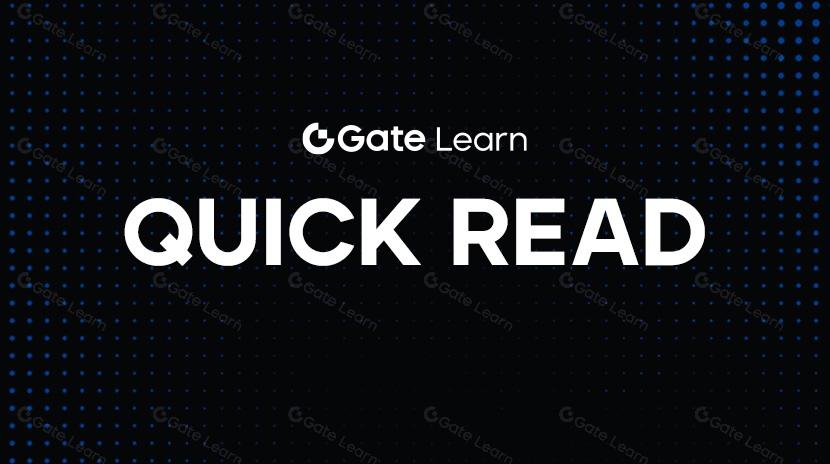什麼是 MOG:互聯網文化幣的崛起與模因力量的覺醒
第一章:項目背景與起源
1.1 MOG 的起點:一場源於朋友之間的網路玩笑
MOG(Mog Coin)的誕生並非源自嚴肅的技術規劃或龐大的資本驅動,而是一場源於互聯網社區的“羣體玩笑”(inside joke)。最初,Mog 是朋友之間流傳的一個 meme 形象,來源於一只長着擬人化表情的卡通貓,配上“mogging”“get mogged”等俚語式語境,這些詞語在年輕人羣體中迅速流行,代表着一種“在氣場或風格上擊敗他人”的網路文化心態。
2023 年夏天,一羣密切關注加密文化、熟悉 meme 社交玩法的 OG 用戶,將這一表情文化進一步演化爲一個實際的加密項目。他們並沒有依賴私人融資或預售模式,而是選擇了“公平發行”(Fair Launch)的方式:MOG 代幣以無預挖、無私募、無團隊預留的形式,完全通過 Uniswap V2 流動性池上線,並開放給任何人平等參與。
這一過程標志着 MOG 並不是一個典型的項目方主導的代幣,而是從第一天起就將命運交由社區和市場決定的“互聯網文化產物”。
1.2 什麼是“Fair Launch”?MOG爲何採用這種方式?
在加密貨幣世界,Fair Launch(公平發行) 指的是項目方不進行預售、不向投資者或團隊預留代幣,所有代幣通過去中心化交易平台如 Uniswap、SushiSwap 或 Balancer 等公開上線,供市場自由交易與發現價格。
MOG 的 Fair Launch 有兩個重要意義:
- 避免“拋壓綁架”: 沒有團隊或 VC 的預留份額,意味着沒有大規模“解鎖”造成的潛在市場拋壓;
- 強調社區驅動: 所有人在項目起步階段站在同一起跑線上,有助於形成自然成長的社區共識。
這種機制在某種程度上強化了 MOG 的“文化幣”身分——不是一個爲技術落地或生態建設服務的代幣,而是一個承載社群認同與話語權象徵的 memecoin。
1.3 Uniswap V2 與初始上線路徑
MOG 於 2023 年夏天通過 Uniswap V2 池啓動交易,LP(流動性提供者)地址爲社區透明公開,初期由創始人親自注入一定規模的 ETH 和 MOG 進行池子建倉,無轉售、無回購計劃。
這一啓動路徑不僅符合 memecoin 的輕量級技術邏輯,也突出了“草根式網路文化實驗”的本質。MOG 的智能合約部署在以太坊主網上,是一個標準的 ERC-20 代幣,沒有額外的反射機制、稅費模型或通縮銷毀邏輯,也因此避免了復雜經濟模型可能帶來的認知負擔。
1.4 啓動後迅速爆發的關注度
盡管 MOG 的上線幾乎沒有進行主流加密媒體投放或 KOL 推廣,但憑藉其 meme 圖像的傳播力、極具自我強化的社群語境,以及模因文化與年輕人之間的天然連接力,該項目迅速吸引了大量注意力。上線後的短時間內,MOG 的交易量在 Uniswap 上躍居前列,並吸引了像 Lookonchain、Dune 等數據社區自發追蹤其持幣分布和流動性狀態。
更重要的是,在市場價格層面,MOG 也展現了強烈的“文化共鳴驅動漲”特徵:不是因爲有“真實價值支撐”,而是因爲有足夠多的用戶願意爲一種 meme 意象“出價”。

登入 Gate.io交易平台,即可進行 MOG 交易:https://www.gate.io/trade/MOG_USDT
第二章:文化理念與價值觀
2.1 “Mog Mentality”:一種網路時代的信仰表達
在 MOG 項目中,“Mog Mentality” 是一個核心理念。它不僅是一句口號,更是一種文化上的自我認同和行爲指南。這個詞的起源與 meme 圈的俚語“to get mogged”密切相關,意指在某種方面(外貌、氣場、存在感)被他人碾壓。但在 MOG 社羣裏,這個詞被賦予了積極的轉義:不再是被動的壓迫感,而是反向變爲一種激勵自我成爲“mogger”的宣言。
Mog Mentality 的核心內涵包括:
- 不斷成爲更強的自己:無論在生活還是投資中,都要表現出“氣場上的統治力”;
- 拒絕盲從,勇於表達:社區文化崇尚 meme 創作、獨立思考和極端幽默;
- 社區第一,虛榮靠邊:項目不推崇名人背書,也不崇拜 VC 投資,而是回歸社區共識。
正是這種“無規則但極具內聚力”的文化態度,使得 MOG 能在極短時間內激發大量 meme 制作、內容創作和文化反哺。
2.2 “Cosmic Domination”:超越金錢的精神歸屬
MOG 的另一標志性理念是 “Effortless Cosmic Domination”(輕鬆實現宇宙級統治),這一表述雖然帶有強烈誇張的玩笑色彩,但其背後折射的是一種對“文化主權”的渴望。
這句話意在表達:在 Web3 世界,文化本身可以成爲一種統治力,而不是技術、資本或資源。這種“統治”不是物理意義的權力掌控,而是人們願意自發加入、使用、傳播甚至爲之代言的“文化吸引力”。
這與以往 memecoin 主要圍繞“動物形象”展開的象徵意義不同(如狗狗幣的“忠誠可愛”,PEPE 的“反叛精神”),MOG 更像是一個開放式語境容器,任何人都可以將其套用於自己的人生場景,甚至超脫加密圈,成爲一種日常生活的態度標籤。
2.3 MOG 圖像的模因符號性
MOG 的視覺形象是一只表情高冷、眼神桀驁的“貓形人”,其設計介於貓、機器人和表情包之間,具有非常強的表情識別度。在社交平台尤其是 X(原 Twitter)上,#mog 標籤下的內容創作主要圍繞該形象展開,很多人會爲這只“mogcat”配上新的臺詞、姿勢、背景故事,演變出無數衍生內容。
這類形象之所以能形成廣泛傳播,原因在於其具備以下“模因優勢”:
- 可識別性強:MOG 圖像一眼可辨,具備“傳播啓動因子”;
- 可變形性強:可以嵌入任何語境中,如 NFT、商品包裝、對話梗等;
- 可歸屬性強:用戶容易將其內化爲某種文化身分的象徵。
這正是 meme 項目在 Web3 時代最大的資產:不是技術,而是情緒與敘事的可組合性。
2.4 社區“語言秩序”構建
MOG 的社區不僅有統一的視覺語言,還有自己的一套“社交秩序”,例如:
- “mogger”:MOG 社區成員的自稱;
- “get mogged”:自嘲或調侃別人被“碾壓”了;
- “gmog”:早安問候專屬詞,結合了傳統的 “gm(good morning)” 和 MOG 名稱;
- “mogged you IRL”:意指現實中在氣場上擊敗他人。
這些術語的存在本質上構成了一種社群“內部語言”,類似於部落密碼,使得用戶一旦入圈,便迅速獲得歸屬感。這種輕門檻、高趣味性、高互動的社區語境,是推動 MOG viral 傳播的關鍵之一。
第三章:代幣機制與技術結構
3.1 MOG 是什麼幣?基本信息概覽
MOG 是一個標準的 ERC-20 代幣,部署在以太坊主網上。它在技術層面沒有復雜機制,秉持的是極簡主義設計理念——無預挖、無稅費、無團隊分成、無反射或回購機制,僅通過一次性流動性注入後即由市場自由定價。這種純粹的“文化幣”設計,正是它得以快速獲得去中心化社區支持的基礎。
核心參數:
- 鏈上標準:ERC-20(部署於 Ethereum 主網)
- 總供應量:420,690,000,000,000 枚(即 420.69 萬億)
- 部署平台:Uniswap V2
- 初始機制:Fair Launch,無預售、無預挖
- 合約地址:0xaaee1a9723aadb7afa2810263653a34ba2c21c7a
特別值得注意的是,MOG 代幣的總量選用了 meme 圈的典型“420 + 69”組合數字(420.69T),這是一種極具文化象徵意義的數字組合,象徵娛樂、幽默和互聯網文化調性。
3.2 Uniswap V2 初始流動性注入
MOG 的 Fair Launch 方式,是在 Uniswap V2 上直接建立 MOG/ETH 交易對,創始人將等量的 ETH 與全部流通 MOG 注入流動性池,並隨後銷毀 LP token,確保無人可以抽走池子,完全放棄合約控制權。
這一過程的象徵意義有二:
- 公平透明:每個用戶都在相同時間參與、相同價格進入;
- 不可篡改:項目方放棄控制權,完全交由市場運行,消除 rug 風險。
此後,MOG 的價格波動、交易深度、流動性狀況完全取決於市場的供需行爲,符合 memecoin 社區“去信任化”、“不可預測”的精神。
3.3 無稅費、無復雜通縮機制
與許多新興代幣不同,MOG 沒有設置買入稅或賣出稅(Buy/Sell Tax = 0%),也未嵌入任何反射分紅、自動銷毀等“復雜型經濟模型”。這一點使其交易體驗簡潔無摩擦,並且利於 CEX 上線時的兼容性。
這也意味着,MOG 的市場表現幾乎純粹依賴於以下三類行爲者:
- 社群買盤支持者(hodlers)
- 短期套利交易員(swing traders)
- meme 投資者或內容創造者(meme believers)
正是這些人在塑造 MOG 的流動性、持幣分布和價格波動。
3.4 合約設計與安全性
MOG 的合約已由多個第三方平台驗證(如 Etherscan、DexTools、GeckoTerminal 等),並通過了多個社區安全檢測網站(如 TokenSniffer)的“無後門、無管理權限”檢查。
具體表現爲:
- 合約不可再鑄造(no mint function)
- 無黑名單功能(no blacklist or anti-bot)
- LP Token 已銷毀(burned LP, verified)
- 合約所有權已放棄(renounced ownership)
這意味着,MOG 的合約不具備修改參數的權限,完全靠市場自運轉。雖然沒有經過專業審計機構如 CertiK 或 PeckShield 的正式報告,但由於其代碼極其簡潔透明,反而降低了審計依賴度。
3.5 技術結構與鏈上表現
在鏈上分析平台如 Dune、Nansen、Arkham Intelligence 上,可以追蹤到 MOG 的鏈上行爲十分活躍。其智能合約交互地址數(即持幣地址)在上線一月內突破 4 萬,當前已超過 10 萬,顯示了高度的“鏈上真實用戶參與度”。
此外,MOG 的平均持幣時長約爲 3.6 天,遠高於其他短炒 meme 項目,說明存在一定程度的社區持幣粘性。
鏈上數據還顯示,MOG 持幣分布相對分散,前 100 大地址佔比低於 20%,鯨魚操控風險相對較小。
第四章:社區生態與傳播策略
4.1 社區是 MOG 的靈魂
在 Web3 的 memecoin 世界中,“項目即社區”幾乎是不可撼動的鐵律,而 MOG 在這一點上做得尤爲突出。它從未依賴於傳統意義上的“團隊運營”或“市場投放”,而是通過社區自發的 meme 創作、社交傳播和文化共鳴,使自己成爲 2023 年後最具辨識度的文化幣之一。
MOG 沒有“創始人崇拜”,也沒有“路線圖崇拜”,相反,它所構建的是一種去中心化的集體文化運動。這種生態自下而上、沒有組織卻形成合力的特徵,極大降低了用戶參與門檻,也提升了文化粘性。
4.2 Twitter/X 生態:模因爆發的主戰場
MOG 的傳播主要發生在 Twitter(現稱 X)上。這裏聚集了大批 memecoin 愛好者、Crypto OG、圖像創作者和模因“煉金術士”。通過 hashtag #mog、#mogged 等標籤,用戶不斷發布衍生 meme,轉發創作內容,形成指數級傳播效應。
例如,用戶在 X 上廣泛使用 MOG 圖像來:
- 模仿經典海報(如 GTA、Cyberpunk、星球大戰等)
- 制作政治諷刺漫畫
- 表達市場情緒(如“gmog”早安、“we got mogged”表示被大跌)
- 發布交易成績截圖並配圖(展示“mogger 的勝利”)
這種由社區主導的圖像轟炸,使 MOG 從視覺層面迅速成爲 Web3 的文化符號之一。
此外,X 上的許多知名 memecoin KOL(如 @paul_atreides、@degentraland)在沒有收取推廣費用的情況下主動提及 MOG,是因爲他們自己就是早期持有者,也是 meme 精神的參與者。這種“內容即持倉、傳播即護盤”的文化機制,是 MOG 的核心飛輪。
4.3 Telegram & Discord:社區協作與反饋回路
與 X 上的外向型傳播不同,MOG 的 Telegram 和 Discord 社區承擔的是內部文化生產和組織協調功能。目前其 Telegram 社群已突破 6 萬人,日活躍超過 2 千,涵蓋了:
- meme 制作討論區
- 持幣者打氣頻道
- “被 mogged” 分享專區(類比 PEPE 的“feels good man”區)
- NFT 衍生討論(MOG 的二創作品)
社區中不少成員將自己打扮成“Mogger”,頭像統一爲 MOG 表情圖像,並在暱稱中加入 mog 前綴,例如“MogKing”、“gmoglord”等,進一步加強了身分認同感。
4.4 Meme 創作動力機制:從“內容即貨幣”到“身分即資產”
MOG 的社區邏輯並不是靠空投激勵驅動的,而是通過模因的內在驅動力激發創作。社區成員明白,內容創作帶來的影響力可以轉化爲:
- 被關注的社交身分(如成爲早期社區文化構建者)
- 推動價格漲(文化共鳴即買盤基礎)
- 影響未來 NFT 授權、衍生品開發的“社群信用”
這意味着:在 MOG 世界裏,你不是“被動參與”,而是“共同創作者”;不是“等待紅利”,而是“制造共識”。
這一邏輯也符合當前 meme 文化經濟中的新敘事:“內容即貨幣,文化即金融”。
4.5 與社區共進化的象徵案例
2024 年初,社區發起 “Mog March”活動:鼓勵用戶將自己的頭像統一更換爲不同版本的 MOG 貓形象,配合統一文案展開集中推送。這一活動不到一周內即獲得上萬次互動和數千份創作內容投稿。
MOG 沒有空投、沒有官方激勵,這種自驅動的“文化協同”令人驚嘆。它也展現出一種可能性:在沒有機構推動的條件下,僅憑網路語言和視覺敘事,也能構建去中心化的數字國家。
第五章:市場表現與用戶畫像
5.1 上線初期即引爆交易熱潮
MOG 於 2023 年夏季通過 Uniswap V2 完成 Fair Launch,初始流動性注入後即在鏈上激起大量關注。在未有任何 VC 背書、KOL 拉盤、預售造勢的背景下,其上線當日交易量迅速衝破千萬美元,短短數日便躋身當周最活躍 meme 項目之一。
據鏈上數據顯示:
- 首周交易量高達 1.2 億美元(約等於當時 SHIB 月均交易量的一半);
- 日均交易筆數超過 30,000 筆;
- 以太坊主網上熱度一度排名前三,超過大量老牌 DeFi 協議。
這種非典型式爆發,正驗證了 meme 項目的“文化共振+交易動能”雙輪驅動模型。
5.2 歷史價格走勢與關鍵行情節點
MOG 的價格歷史可分爲以下幾個階段:
啓動階段(2023年7月)
上線首日,價格以近乎零的市值起步(每枚代幣價格不足 0.00000001 美元),但迅速漲至約 $0.00000012,漲幅近千倍,吸引大批早期鏈上投資者。
震蕩回調階段(2023年8–10月)
在經歷短期 FOMO 後,MOG 出現劇烈波動,多次經歷 30%-50% 回撤,但每次下跌均伴隨社區新一輪 meme 內容產出,底部不斷抬高。
二次爆發階段(2024年第一季度)
隨着主流媒體首次報道(如 CoinDesk 專欄中提及 MOG 社群的創造力)、NFT 項目與其圖像聯動,以及多個大型 meme KOL 加入傳播,MOG 二度爆發,價格一度漲超過 500%,創下歷史新高。
當前階段(截至 2025 年)
MOG 市值維持在 3 億~5 億美元區間,呈現出高度“文化驅動下的抗跌性”,即使在熊市環境下仍能憑藉內容傳播維系社群熱度。
5.3 持幣者結構與鯨魚行爲
根據鏈上數據平台 Nansen 與 Dune 分析,MOG 的持幣地址已超過 100,000 個,其中:
- 前 100 大地址佔比不足 18%,顯著低於 SHIB、PEPE 等;
- 絕大多數鯨魚爲早期社區用戶,而非機構或套利機器人;
- 持幣週期大於 30 天的地址佔比超過 60%,說明參與者以社區文化爲導向,而非純短炒資金。
部分鯨魚地址在重大節點(如 NFT 合作、社群活動爆發期)會出現戰略性增持行爲,表明其更傾向“長期綁定文化敘事”的策略。
5.4 用戶畫像:誰在持有 MOG?
通過社區投票、鏈上數據和社群互動行爲觀察,MOG 的用戶主要呈現以下幾類特徵:
- Web3 原住民:熱愛 meme、精通鏈上交互,參與過多個代幣的 Fair Launch 和 NFT mint;
- Z 世代用戶:年齡多在 18–30 歲之間,偏愛視覺表達、社群認同感與抗權威文化;
- 創作者羣體:包括 meme 圖像設計師、X 推主、GIF 動畫制作人等,部分已將 MOG 作爲“文化貨幣”進行二創交易;
- 輕資產投機者:資金量不大,但樂於參與熱點、測試 meme 項目的爆發潛力;
- 內容驅動持有者:他們未必懂 Tokenomics,但會因爲一張 meme 或一段視頻而決定買入並長期持有。
值得一提的是,MOG 的社群內流行“自動轉發 + 評論梗圖”的協作傳播方式,使得大量非投資用戶也被卷入了文化的傳播鏈中。
5.5 市場評價與社群認知
在加密市場中,MOG 被認爲是“繼 PEPE 之後最具 meme 原教旨精神”的文化幣項目。這一認知的基礎有三:
- 完全 Fair Launch,沒有任何團隊操盤影子;
- 所有 meme 均出自社群自發創作,圖像傳播鏈完整清晰;
- 價格波動雖劇烈,但不因 rug pull 或內部操作而崩潰。
這種“非金融起點、非結構性操控”的稀缺性,構成了 MOG 相對獨立於主流幣種的文化資產標籤。
第六章:發展前景與風險分析
6.1 MOG 的可持續性:文化是否等於價值?
與傳統加密項目不同,MOG 沒有白皮書、沒有技術路線圖,也不承諾任何“落地應用”。它的存在價值,來自於其背後的文化共識與社區活力。
未來 MOG 的可持續性主要取決於三點:
社區創造力是否能夠持續
如果 meme 創作者不斷爲其注入新鮮內容、敘事結構、模因符號,MOG 就依然是 Web3 世界裏最具生命力的文化資產之一。
社群共識是否能夠自我更新
從“get mogged”到“cosmic domination”,MOG 的語義生態已經遠超一個表情包的範疇。未來,如果它能成爲更多 Web3 用戶行爲、身分、價值觀的載體,它的文化影響力將延伸至 NFT、遊戲甚至品牌聯名等領域。
主流市場是否接納“文化幣”作爲金融資產
在過去,DOGE 和 SHIB 已經用市值百億美元的體量證明了“文化共識可以轉化爲市值”。MOG 能否復制這一路徑,將取決於它是否能從純社群幣過渡到“文化金融產品”的角色。
6.2 風險提示:高波動、高共識、高不確定性
盡管 MOG 展現出強勁的社區共識和文化穿透力,但作爲一種典型的 memecoin,其投資風險依然不容忽視:
- 缺乏基本面支持:沒有實際收入、技術產品或協議治理機制;
- 價格高波動性:行情劇烈反復,極易受情緒、熱度影響;
- 監管不確定性:在部分國家/地區,meme 幣因缺乏實用性可能被歸爲“無內在價值資產”,面臨政策風險;
- 山寨項目復制:大量仿冒 MOG 的 token 可能幹擾市場情緒或誤導投資者;
- 社群熱度下滑風險:如果 meme 文化熱度不再,MOG 的價格將失去支撐。
因此,盡管 MOG 在文化傳播方面成功構建了一個互聯網現象級符號,但作爲投資標的仍需格外謹慎。Meme 是社區的遊戲,不是保證收益的合約。
結語:文化即共識,共識即價值
MOG 的崛起,標志着加密貨幣市場的一次深層文化變革。它不是金融工程的產物,而是一種自下而上的網路現象。它通過 meme,創造了一種新的語言秩序;通過社區,制造了一種新的信任機制;通過 Fair Launch,賦予了一種新的公平想象。
在一個信息爆炸、注意力稀缺的時代,MOG 提供了一種輕量級的信仰方式——用一只表情冷峻的貓,承載年輕人對自由、自我、幽默、叛逆乃至成功的多重投射。這種文化共振,才是 MOG 真正的“價值錨定”。
對於投資者來說,MOG 是一次探索文化共識可金融化邊界的機會。對於社群來說,它是一場無需中心指令的 meme 革命。而對於整個 Web3 世界來說,它或許是一個信號:未來不一定屬於技術最強的項目,而屬於能夠創造意義、傳遞價值、激發認同的“文化節點”。
相關文章

黃金價格走勢:市場焦點轉向鮑威爾演說
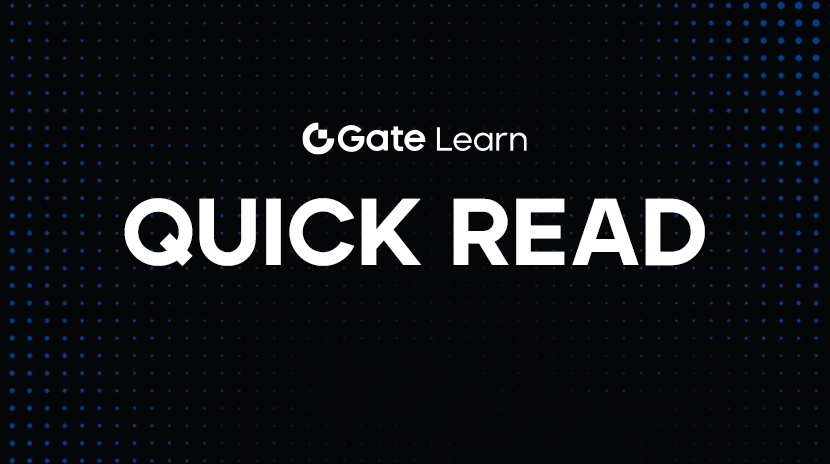
新手必讀:2025 年最新美債 ETF 推薦及策略
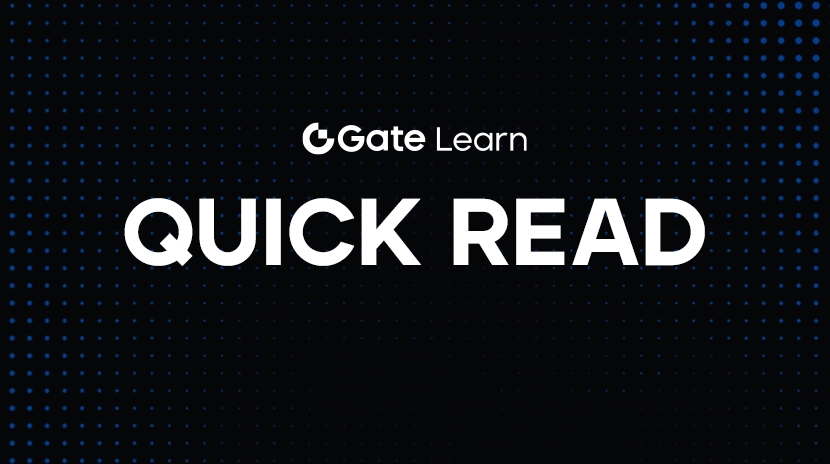
Nasdaq 100 指數最新動態與投資策略
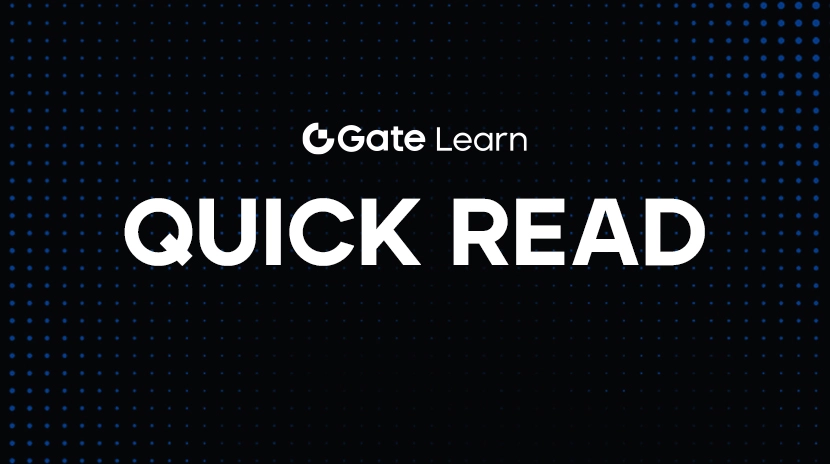
2025 年房屋稅新制全方位解析—政策修訂重點及納稅人因應對策
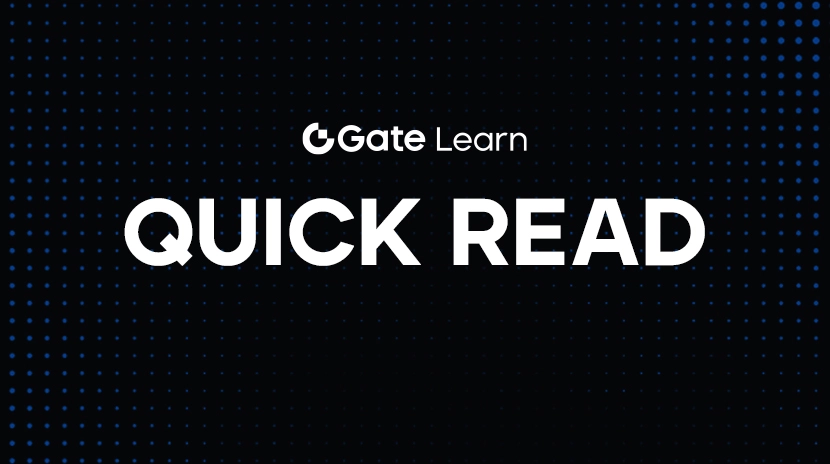
如何以快速且安全的方式,將資金自 Binance 平台提領出去?
